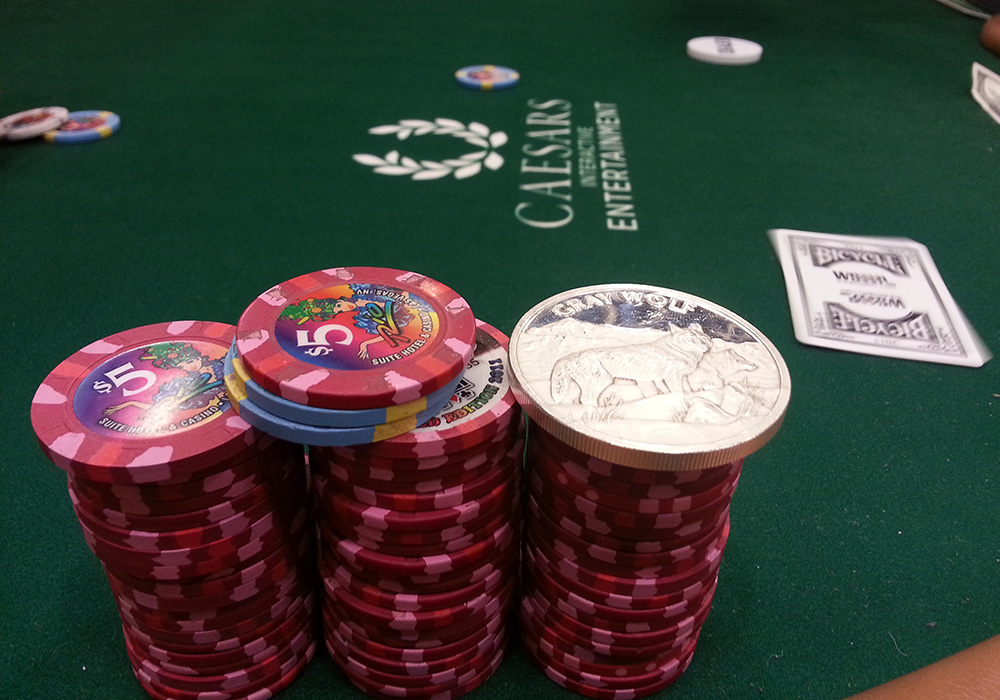
Here’s a detailed guide for Texas Hold’em poker for beginners:
- Introduction to Texas Hold’em: Texas Hold’em is one of the most popular forms of poker played worldwide. It is a community card game where players aim to make the best five-card hand using two private cards dealt to each player and five community cards placed on the table. The objective is to win the pot, which consists of bets made by players throughout the hand.
- Hand Rankings: Familiarize yourself with the hand rankings in poker. From highest to lowest, they are as follows:
- Royal Flush: A, K, Q, J, 10 of the same suit.
- Straight Flush: Five consecutive cards of the same suit.
- Four of a Kind: Four cards of the same rank.
- Full House: Three cards of one rank and two cards of another rank.
- Flush: Five cards of the same suit, not in sequence.
- Straight: Five consecutive cards of mixed suits.
- Three of a Kind: Three cards of the same rank.
- Two Pair: Two sets of two cards of the same rank.
- One Pair: Two cards of the same rank.
- High Card: If no player has any of the above hands, the highest card in their hand determines the winner.
- Game Setup:
- Texas Hold’em is typically played with a standard 52-card deck.
- Each player is dealt two private cards (hole cards) face-down.
- Five community cards are placed face-up on the “board” during the course of the hand.
- Pre-Flop:
- Before any cards are dealt, the two players to the left of the dealer post the small blind and big blind, respectively.
- The dealer button rotates clockwise after each hand, ensuring every player takes turns being the dealer.
- Each player receives their two hole cards.
- The first round of betting begins with the player to the left of the big blind.
- The Flop:
- After the first round of betting, the dealer places three community cards face-up on the board. This is called “the flop.”
- Another round of betting begins with the player to the left of the dealer.
- The Turn:
- Following the flop, the dealer places a fourth community card face-up on the board. This is called “the turn” or “fourth street.”
- Betting recommences with the player to the left of the dealer.
- The River:
- Once the turn betting is complete, the dealer places the fifth and final community card face-up on the board. This is called “the river” or “fifth street.”
- A final round of betting occurs, starting with the player to the left of the dealer.
- Showdown:
- If there are two or more players remaining after the final round of betting, a showdown occurs.
- The remaining players reveal their hole cards, and the player with the best hand using any combination of their hole cards and the community cards wins the pot.
- In the case of a tie, the pot is split equally between the tied players.
- Betting Options:
- In Texas Hold’em, players have several betting options:
- Check: If no one has bet before you, you can choose to check, which means passing the action to the next player without putting any additional chips into the pot.
- Bet: You can make the first bet in a round.
- Call: If a bet has been made before you, you can match the previous bet to stay in the hand.
- Raise: If a bet has been made before you, you can increase the previous bet.
- Fold: If you don’t have a strong hand or don’t want to continue, you can fold and discard your hole cards, forfeiting any bets made.
- In Texas Hold’em, players have several betting options:
- Hand Strategy:
- Starting Hands: Some starting hands are stronger than others. It’s generally recommended to play premium hands like pocket aces (A-A), pocket kings (K-K), and strong suited connectors (e.g., A-K suited, Q-J suited).
- Position: Your position at the table affects your betting decisions. Acting later in the hand gives you more information about your opponents’ actions and allows you to make more informed decisions.
- Pot Odds: Consider the size of the pot and the cost of your bet. If the potential reward is greater than the risk, it may be worth continuing.
- Reading Opponents: Observe your opponents’ actions, betting patterns, and body language to gain insights into their hand strength.
- Bluffing: Occasionally, bluffing can be an effective strategy to win pots by representing a stronger hand than you actually have. However, use bluffing sparingly and strategically.
- Etiquette:
- Avoid discussing the hands in play while the hand is ongoing.
- Act in turn and avoid excessive delays in making decisions.
- Do not reveal your hole cards or discuss their contents until the hand is complete.
- Be respectful to other players and the dealer.
- Follow the specific rules and guidelines set by the casino or the poker room you are playing in.
Remember, poker is a game of skill and luck. It takes practice, observation, and patience to become a successful player. Good luck and enjoy playing Texas Hold’em!






